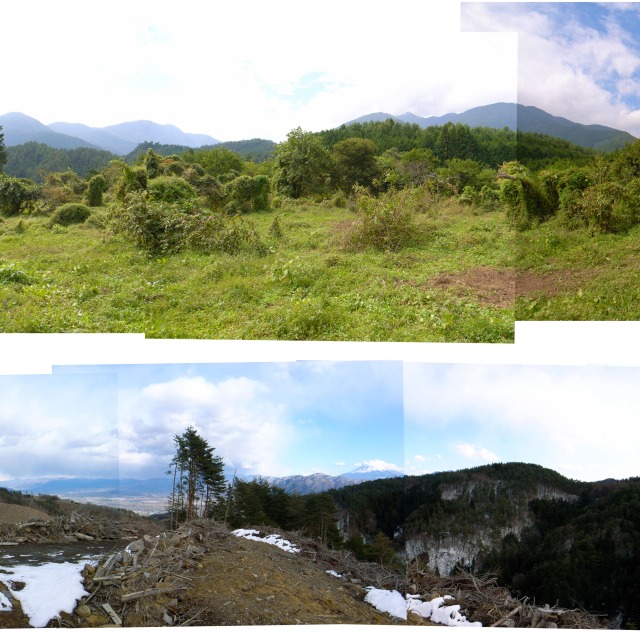Strategies in the Wild
Minami-Alps, Yamanashi Prefecture, Japan, 2009
This project two hours away from Tokyo led us to ten hectares of remote wilderness.
The fingers of relentless suburbanisation in the Tokyo-Yokohama metropolitan area are stretching more and more into the surrounding wilderness of Japan’s hinterland.
Where masterplanning has often led to a homogeneous replication of sub-urbanism, we suggested interactive strategies working with the existing.
We were approached with an interesting idea: A network of remote pieces of land, just within reach of a two-hour drive from central Tokyo, in proximity to villages that are ageing so rapidly that many of them are beginning to become abandoned, should become places for immersion into the wild, reconnecting with nature and the people of the many places that are still feeding Tokyo’s urbanites.
The first piece of land were 30 hectares just two hours southwest of Tokyo. We were asked to devise strategies for 20-25 individual plots for people who’d engage in such a concept.
Instead of following the often-found replication of urban homogeneity in the country, we suggested site-specific strategies that work from the bottom up to find new types of living.
The site is divided following strategies of the curious opportunist: First, occupy the site’s hotspots, and, with upper and lower limit for occupancy set, let the distances between the occupied hotspots follow naturally.
Plot lines are not drawn a priori but likewise emerge over time, demarcating the median and thus maximum privacy between neighbouring occupied points.
At the centre, a communal place provides the necessary infrastructure to allow the individual plots to be as free or filled with clutter as desired by their owners. Where in the conventional countryhome-setting an overload of un-necessities results in a homogeneous environment of replicated suburbia, we proposed a diversity of lightness: The specific rather than the generic, the specialised rather than the all-comprising. The individual plots are thus freed from the unnecessary and given the opportunity to explore the specific: A diverse network of hammock, dance studio, atelier, tree house, hair salon, cooking room, workbench…
Instead of creating a home for an isolated community of weekend-escapers, the programmatic diversity creates an interactive network with the local communities.
Minami-Alps, Yamanashi Prefecture, Japan, 2009
Type
Status
Team
Florian Busch
Collaboration with: Daisuke Hirose, Hideyuki Nakayama
Size
100,000 m²









publications
Related Projects:
- Zentral- und Landesbibliothek Berlin, 2013
- F&F Project, 2011
- Tokyo Designers Week 2011, 2011
- Toké 7, 2010
- Strategies in the Wild, 2009
